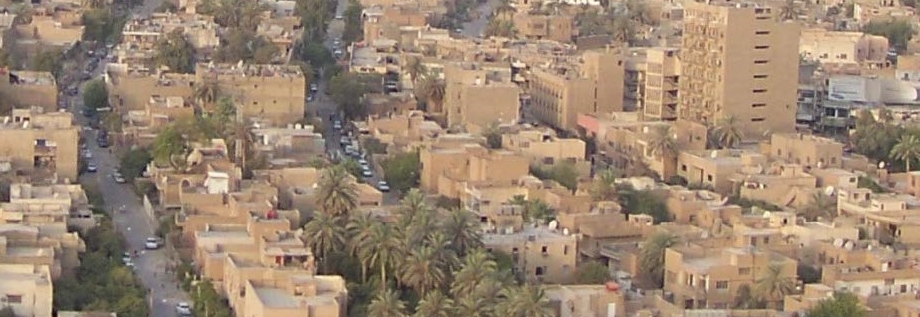Baghdad Recollections
By Geoffrey Payne
August 2023
I still remember my time in Baghdad with great pleasure. I had been invited to contribute to the preparation of a Greater Baghdad Spatial Plan and a housing policy for Greater Baghdad and Baghdad City. I arrived in the summer of 1986 in the middle of the Iran-Iraq war to a temperature of 36C. The assignment was for two visits of three weeks each, separated by a visit to MIT in the USA for lectures and a seminar.
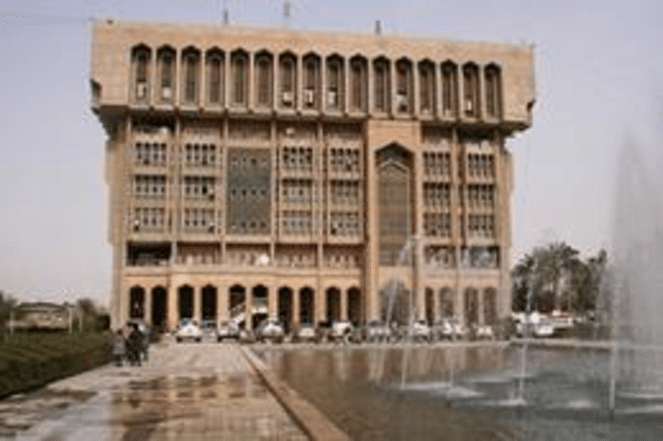
Baghdad Municipality Buiding, where JCCF offices were located.
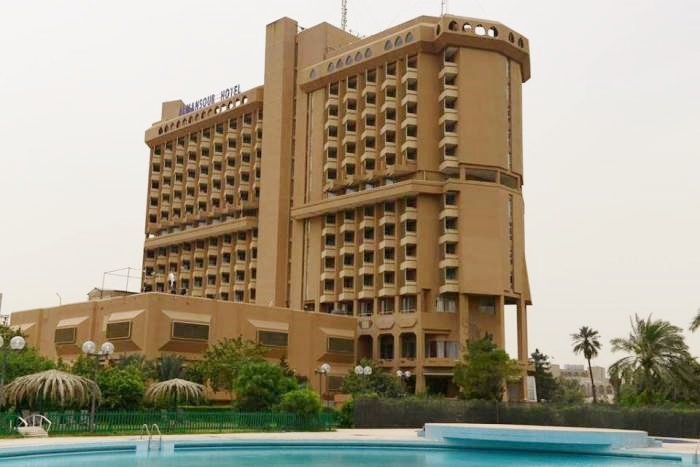
Melia Hotel, Baghdad.
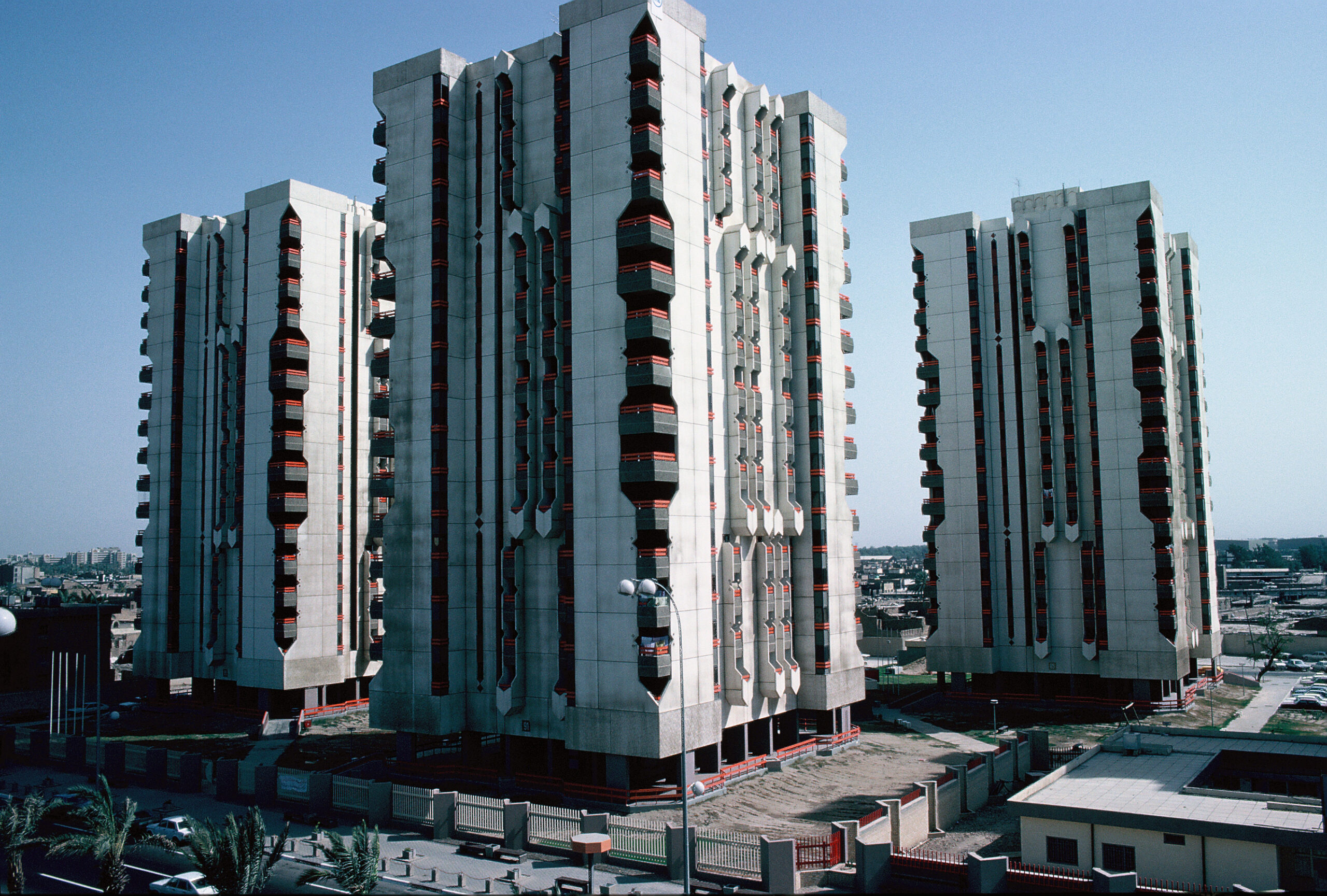
Haifa Street, Baghdad. Image Geoffrey Payne 1986.
The project, Baghdad 2001: The Integrated Capital Development Plan (ICDP), was funded by the Government of Iraq and Baghdad Municipality and was undertaken by the Japanese Consortium of Consulting Firms (JCCF), for which Mr. Yasuhiko Yamada was the extremely professional and amiable representative. Initially, I stayed at the Melia Hotel and then moved into an apartment on the famous Haifa Street.
The assignment was for two visits to Baghdad of three weeks each, in 1986.
My responsibility involved building on the land assessment study by David Sims, who I had worked with years before in Egypt, and alongside a great Iraqi colleague, Nadia Tobia, who I have kept in touch with ever since. In addition to other Iraqi colleagues, the team also consisted of a number of British, Japanese and American consultants.
Coordinating such an international workforce from very different cultures presented the project management with a major challenge and some wit observed that it was hardly surprising if communication issues existed when the US and British team members wrote from left to right, Iraqi team members from right to left, Japanese from top to bottom and management were going round in circles! The cultural mix certainly presented issues, but I relished the opportunity to learn from the amazing traditions of spatial planning and vernacular architecture that made Baghdad such a rich environment in which to try and make a contribution.
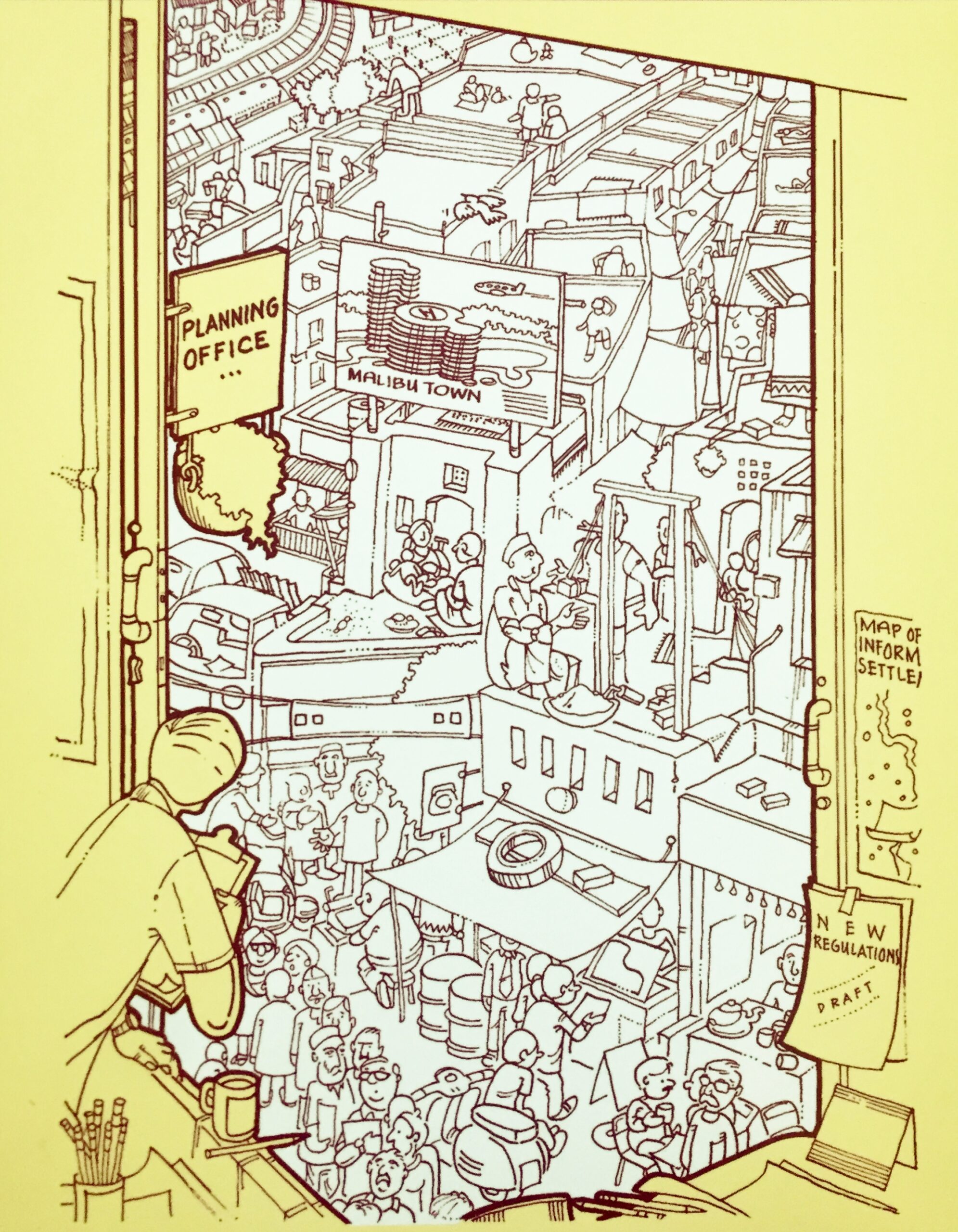
Cover of ``The Urban Manual``, Geoffrey Payne and Michael Majala 2004.
Drawing on memories
Having undertaken previous research and consultancy in the region, I was immensely impressed by the ways in which the urban environment and architecture of Baghdad had evolved to reflect the local culture, religion and climate. The need for privacy was traditionally achieved by building the front of the house facing straight onto the road or lane and building walls around the sides and back of the plot of land against which neighbours constructed their houses. Private open space was provided in the form of internal courtyards. Those with adequate resources would create elaborately decorated frontages onto the narrow lanes that provided protection from the sun. It was easy to get lost in the maze of paths, so residents could easily identify a visitor to their neighbourhood. However, as in so many countries, changing lifestyles meant that these traditional forms of urban planning and building design were steadily being replaced by multi-storey residential towers that provided all modern amenities, such as air conditioning and spaces to park a car. In this way, outstanding examples of traditional houses were retained almost as museum exhibits and in one case a superb house with three blank external walls and a beautifully decorated front wall was left standing in the centre of a traffic roundabout, providing a reminder of how local people had once lived.
One way of both learning about the city and meeting the people that I always find rewarding is to spend time after work sketching in areas of interest, so I would often go into the old parts of Baghdad and spend an hour or so doing pencil or ink sketches. Invariably, local residents would express curiosity and some even invited me into their homes for tea, a privilege that enabled me to see how they lived, even if language was sometimes a limiting factor. I usually left the sketch with them as a way of expressing thanks. However, on one occasion, a young guy asked in perfect English where I was from and when he heard I was from England told me he was a great supporter of Liverpool Football Club and if I was ever coming back to Baghdad could I do him a favour? I told him that yes, I was here for two visits and was returning for three more weeks after a gap of two weeks. He was very excited at this and asked if I could possibly get him a Liverpool shirt as a wedding present! I am happy to report that my wife kindly organized this and I was able to present it to him on my second visit, though I never got to find out if he wore it at his wedding. When one has personal memories such as this with local people, it influences how one remembers a place.
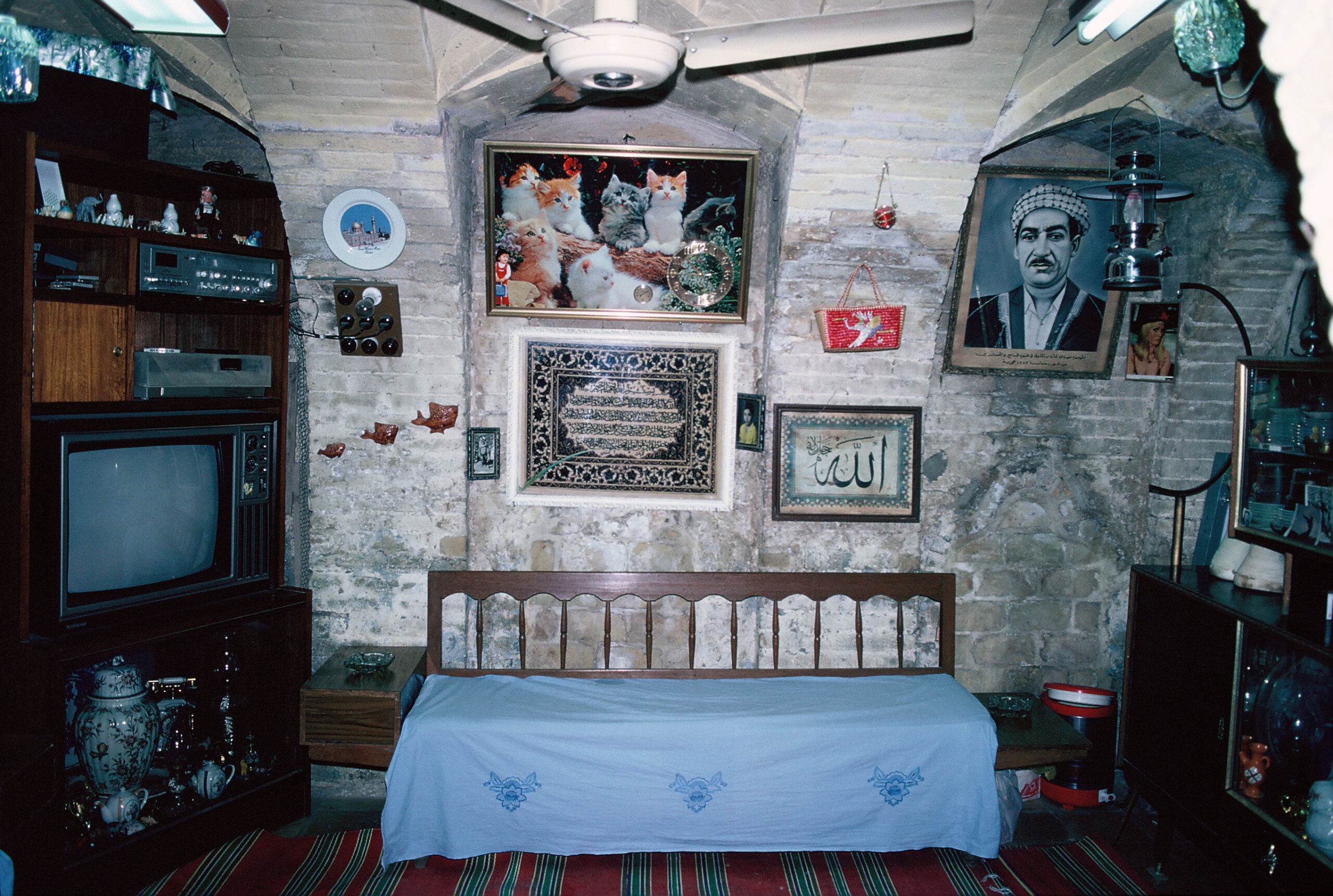
Inerior of a house in Old Baghdad, Rusafa. Image Georfrey Payne 1986.
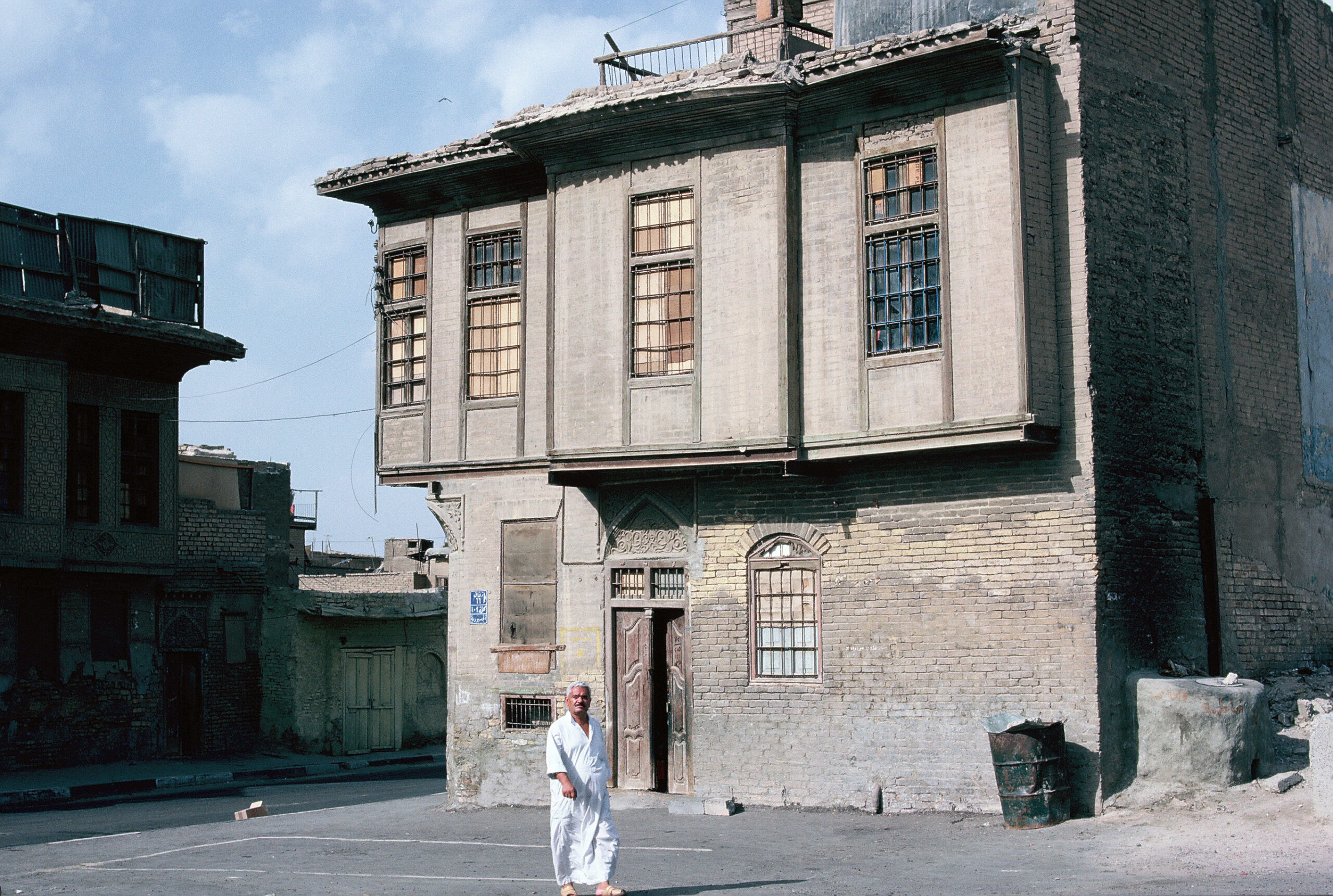
Exterior of a House in Rusafa, Old Baghdad, Image Geoffrey Payne 1986.

Neighborhood aerial view of old Baghdad.
My first visit ended literally on a high note as I had got to know the international airline manager for Iraq, and when I told him when I was flying home, he said it coincided with a flight he would also be on. When checking in at the airport, I was asked to stand aside and was amazed to be upgraded to first class, where I enjoyed his company, great food and liberal amounts of alcohol. When the manager heard I was a glider pilot, he kindly arranged for me to be invited into the cockpit where I sat in the jumpseat behind the captain for the final approach into Heathrow. It is impossible to imagine being able to enjoy such an experience today!
An amazing legacy
International consultancy assignments often provide a unique opportunity to visit places inaccessible to tourists and I was extremely fortunate in being able during my mission to visit some of the world famous sites in the country. Located in a region known as the Fertile Crescent due to the opportunities for irrigation provided by the Tigris and Euphrates rivers, Iraq can lay claim to being the origin of urban society since this is where the first cities of Ur, Uruk, Nineveh, Babylon and Erbil were developed. As an architecture student, I had already been fascinated by Wilfred Thesiger’s book on ‘The Marsh Arabs’ which demonstrated incredible creativity in using local materials to build boats, houses and major structures out of straw reeds and manage the local environment in a sustainable way.
Arriving in the country, I was keen to take every opportunity to see what I could and I was privileged to be able to visit several world-renowned monuments and settlements during my weekends.
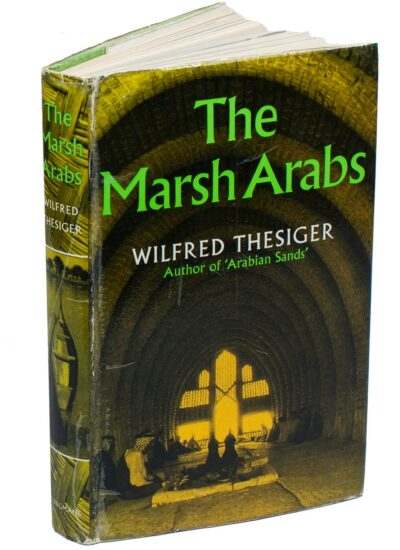
Wilfred Thesiger, ``The Marsh Arabs`` 1964.
Trip to Hatra and Samarra to the North
On my first weekend, I left Baghdad by car with other team members, Tom Murray and Sam Sherer to visit the ancient settlement of Hatra, nearly 300 kilometres north-west of Baghdad where we stayed the night in a hotel. I read that Hatra was created about two thousand years ago by the Parthians as a trading centre and had been attacked many times before being mainly destroyed in AD 241.
The next day we were up at 5am to make sure we could see the sun rise over Hatra and after breakfast explored the site to find many monumental buildings still intact and statues of ancient gods still in good condition, despite being in the open air. We also had a brief look at the old Assyrian capital of Ashur, before visiting the spiral minaret of Samarra “Al-Millwiya”.
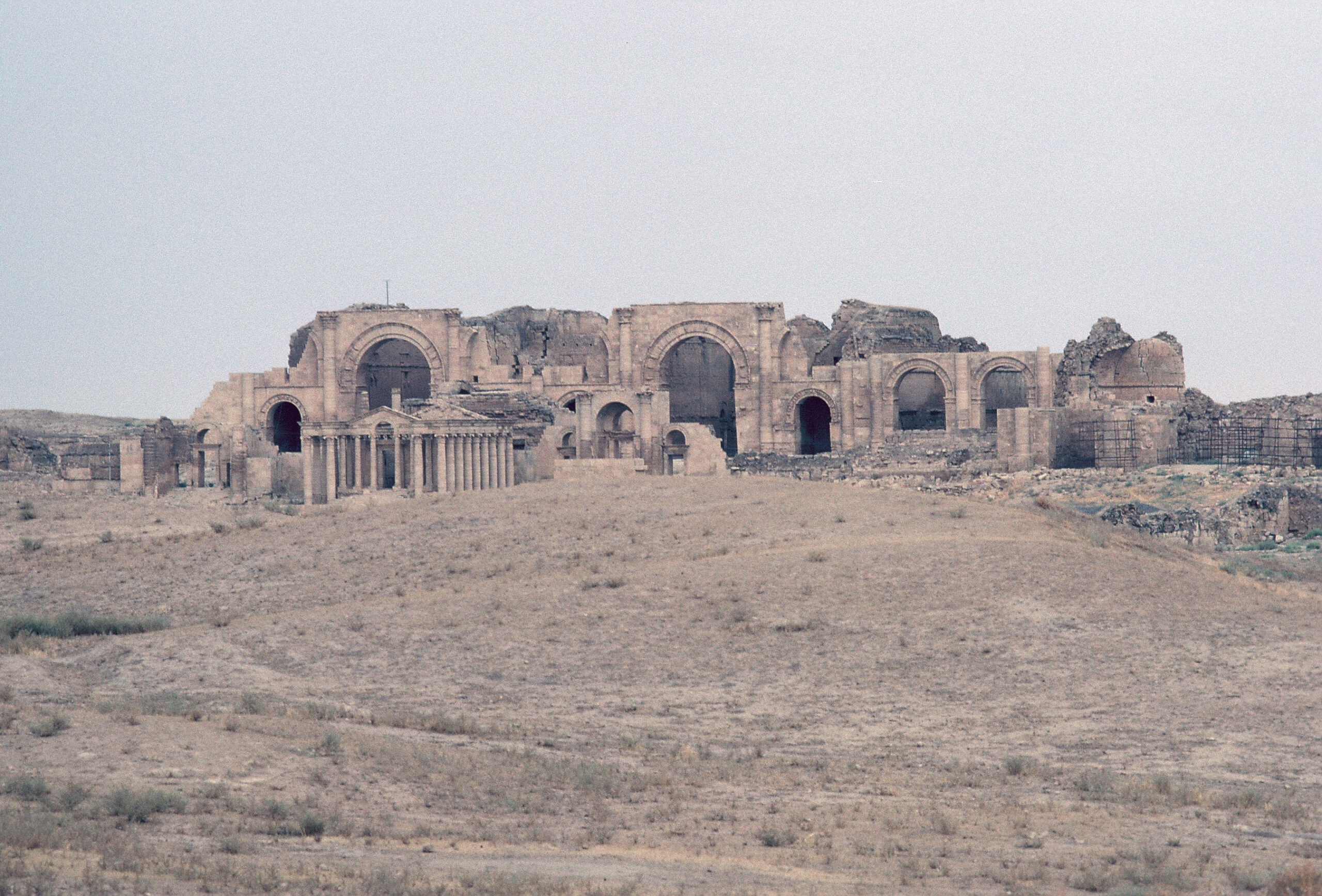
Hatra site. Image Geoffrey Payne 1986.
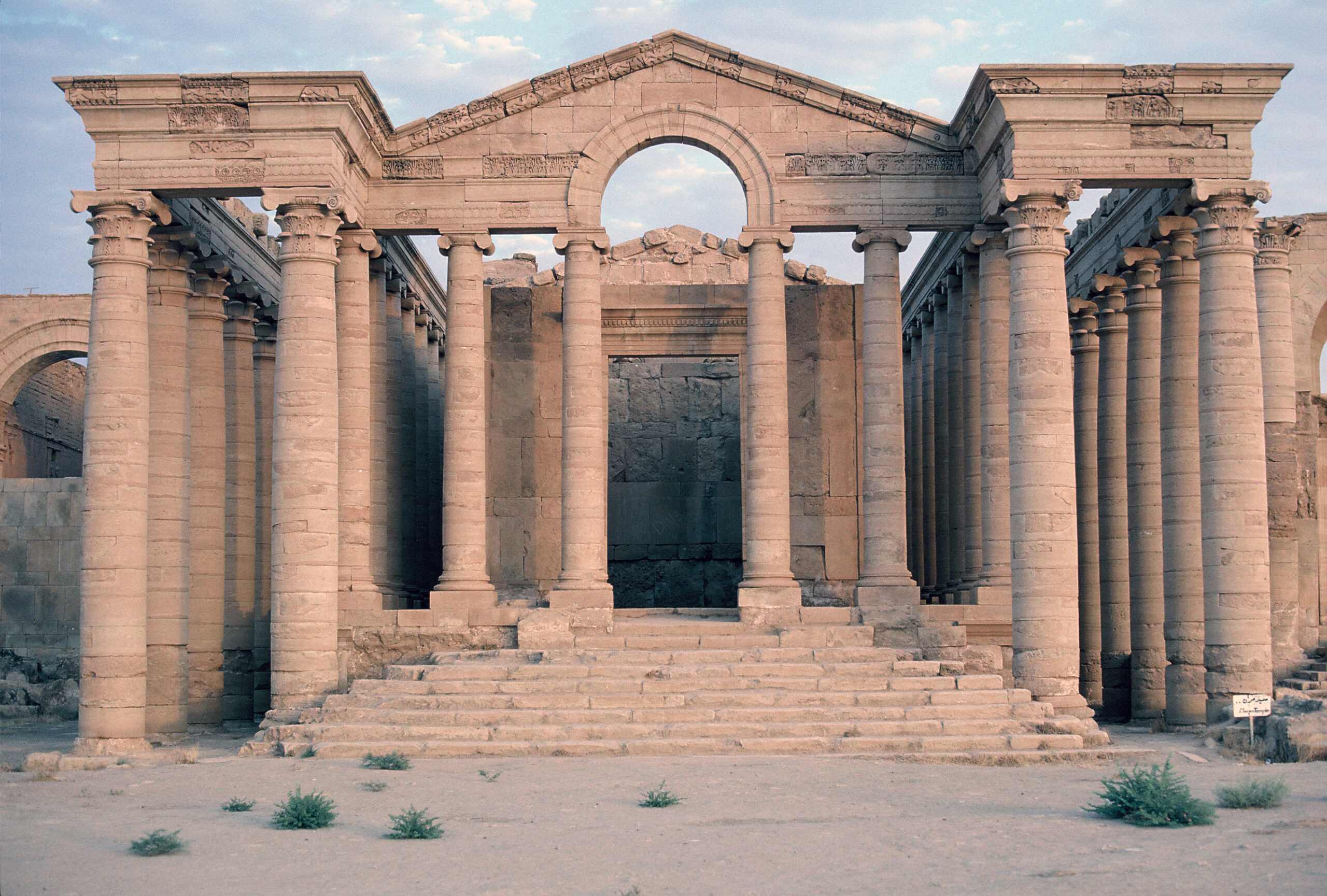
Facade of temple in Hatra, Image Geoffrey Payne 1986.
At Samarra, where I took the opportunity to climb to the top for an amazing view. The lack of a handrail provided a challenge and a deep respect for those plucky people who actually built it.
Our adventure ended on a rather flat note as we had a puncture on the drive back to Baghdad, though fortunately not far from the city and we were able to enjoy a good dinner at the Trattoria restaurant in the Melia Hotel.

City of Samarra, view from the minaret of the Great Mosque of Samarra. Image Geoffrey Payne 1986.
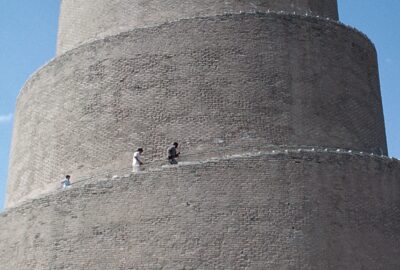
Close up of the spiral minaret of the Great Mosque of Samarra. Image Geoffrey Payne 1986.
Trip to Babylon and Karbala to the South
The next weekend, we were up early to visit the mosque and shrine at Kerbala, before visiting the massive monument of Babylon, where we walked between high walls and admired the carved reliefs of horses and people placed along the walls. The dry climate made any thought of the ‘hanging gardens of Babylon’ seem unreal. Apparently, there is even more to be excavated, but what we saw was enough to justify the area’s global reputation.
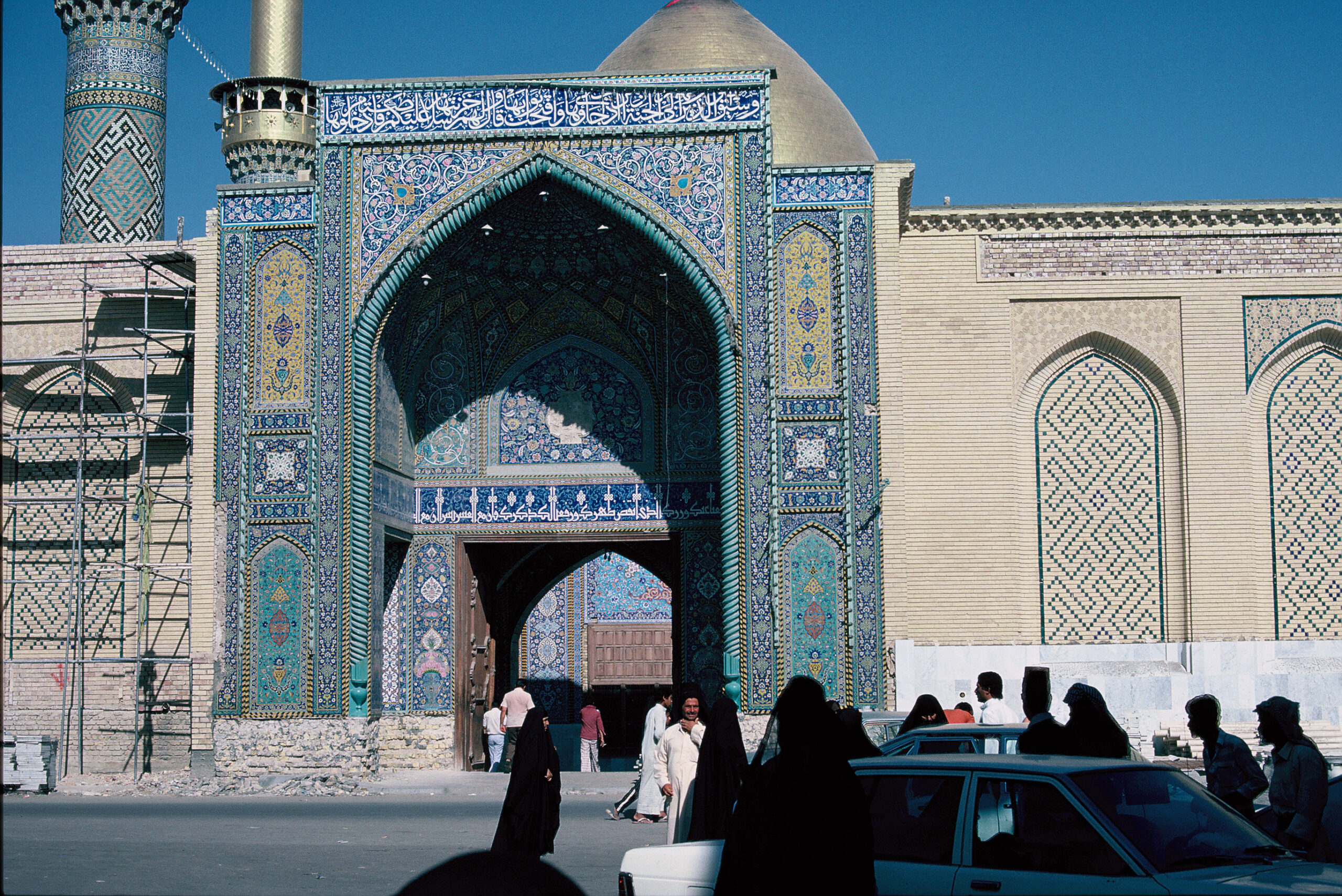
Al-Abbas Holy Shrine, Karbala. Image Geoffrey Payne 1986.

Brick walls of ancient Babylon city. Image Geoffrey Payne 1986.
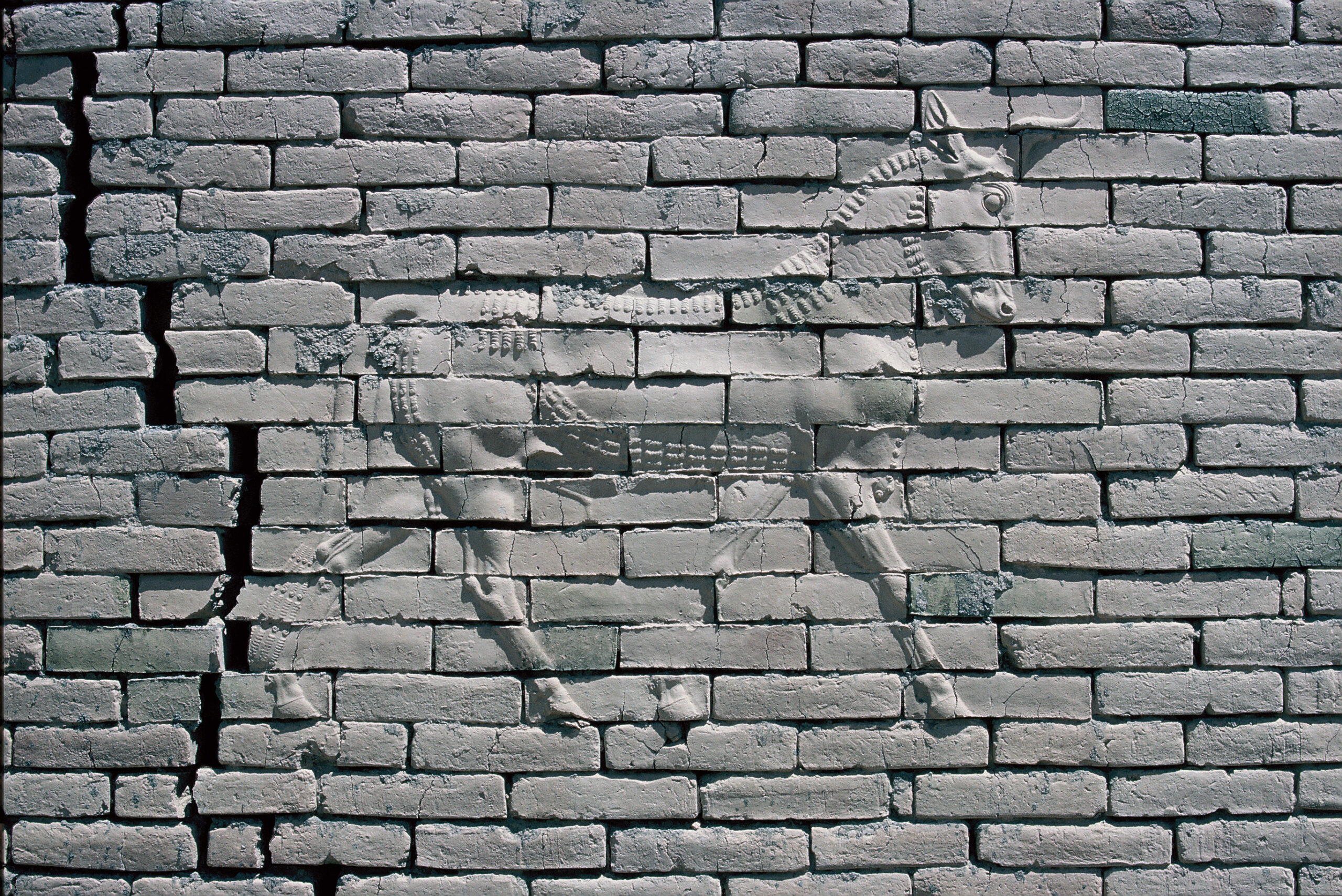
Close up of brick wall carvings, Babylon . Image Geoffrey Payne 1986.
Trip to Ctesiphon arch
The ancient capital of the Parthians and Sassanians, Ctesiphon is 24 kilometres southeast of Baghdad, so I really had to see it! Despite the many attacks Ctesiphon suffered, many structures have survived and the massive brick archway, the Taq Kasra, was still largely intact. The arched iwan hall, open on the facade side, was about 37 meters high, 26 meters across and 50 meters long, the largest man-made, free standing vault constructed until modern times.
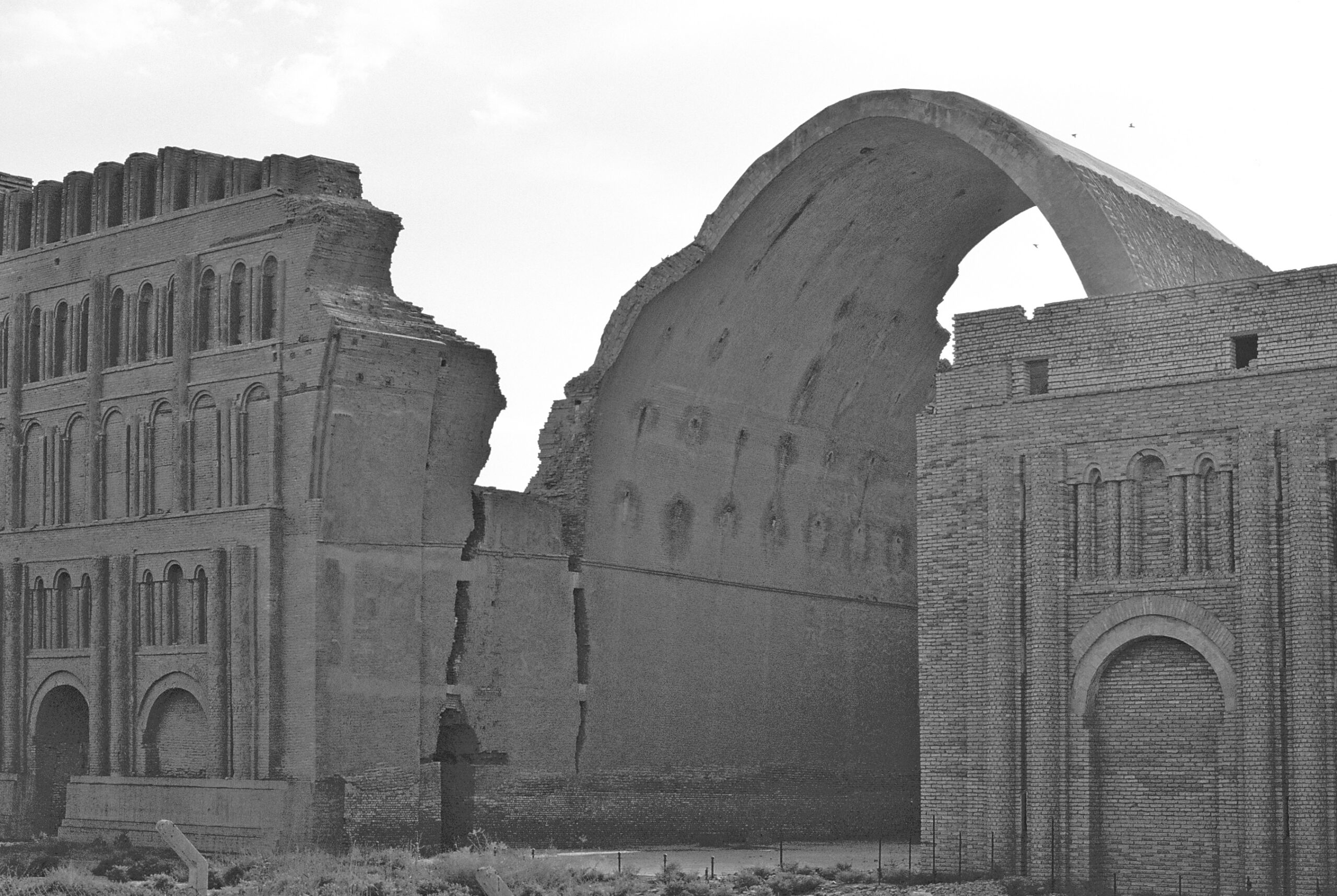
Ctesiphon Arch. Image Geoffery Payne 1986.

Coffee Shop at Ctesiphone, Image Geoffery Payne 1986.
Cultural values and changing lifestyles
I was amazed at the sophistication and beauty of the various monuments, statues and carvings I was able to visit during my short time in Iraq, all of which reflect a country with a unique cultural heritage. The dry climate has enabled most of the monuments to remain relatively intact, though I cannot help wondering what state these monuments to human progress are in today, given all the suffering that conflict has generated in the country since my visit. The architecture of the Kerbala mosque was covered in a rich pattern of tiles, the medresseh, Al-Mustansiriyah in Baghdad was also in good condition, but in many parts of the old city, such as Roussafa, the elegant two or three storey houses, with their elaborate timber decoration and internal courtyards accessed from narrow lanes, were being replaced by faceless, multi-storey developments surrounded by open space and car parks. Baghdad was following what has become a global trend, but at what cost to cultural identity?
I was amazed at the sophistication and beauty of the various monuments and carvings, all of which reflect a unique cultural heritage.

Samarra Spiral Minaret . Image by Geoffrey Payne 1986.

Statue of the Goddess Shahiro, Hatra. Image by Geoffrey Payne 1986.
The Benefits of Jetlag
In between my two visits to Iraq, I spent a week in the USA, stopping off in London for a few days to see my family and collect the Liverpool Football Club shirt and then returning back to Baghdad. On arrival, I had a game of tennis and went to bed early given the time difference and need to be at work early the next morning. I had only been at my desk for about an hour when the phone rang and my wife, a journalist with the BBC World Service, asked if I was okay. She said there had been reports of a SKUD missile from Iran hitting the city and was concerned to know if I was okay. Keen to reassure her that I was well and had heard nothing at all, I gave her my love and put the phone down, only for others in the office to ask why I had not heard dozens of fire engines and ambulances go past my apartment in the middle of the night!
Running the Course
Consultancy missions usually involve long flights, intense meetings, reading and writing reports. To help make sure I can deliver, I also like to try and keep fit when the chance arrives and fortunately, several colleagues played tennis, so we would often spend an evening playing a couple of sets and then downing a beer or two before dinner. On other occasions, I would go swimming in Finn Village, where some of the JCCF team were living, which was also a good way of both exercising and keeping cool.
One day, the project leader, Jac Smit, mentioned that the ‘Hash House Harriers’ were organising an evening cross-country running event and invited me to join him. While I had always enjoyed running as a child, I had not done any long distance running for many decades and had never heard about Hash House Harriers (HHH). I was to find out the hard way.
According to Wikipedia, the HHH tradition originated in December 1938 in Kuala Lumpur, Malaysia. A group of British residents began meeting on evenings to run, in a fashion patterned after the traditional British game of hare and hounds, where one or two “hare” players set off and leave a trail of cut paper around a course for the “hounds” to follow. The practice later spread to other countries where British and other expatriates were working. After completing the course, the runners would celebrate in typical expatriate fashion by consuming large amounts of beer, gaining it the reputation as a ‘Drinking Club With A Running Problem’.
As we started, I was told that there were two versions of the event, a short one of about three kilometres and a longer one of more than six. I explained to Jac that I was only doing this for fun and as it was still very hot, I would opt for the shorter run.
We started together and soon reached a village where the residents were standing outside their houses watching with amazement and amusement at these foreigners running past in the heat, so we all put on a little spurt to show how tough we were.
This took its toll on my energy level and I was happy to have decided on the shorter run, only to see one of the organisers standing on a platform at the end of the village yelling out to everyone “for the shorter run, women and the weak turn left, everyone else turn right!” Obviously, I didn’t want to lose face by opting for the short run, so turned right and managed eventually to get round the longer course, though at the expense of badly pulling a calf muscle when jumping over a ditch.
We all then drove back to a diplomatic residence where we assembled to celebrate. A group on the roof called out to ask us if we were thirsty and, seconds later, a barrel of beer was emptied over our heads. Bottles were then brought into the garden where they were rapidly emptied – a welcome form of medicine to ease the pain in my leg. I have never taken part in a Hash House Harriers event since, though even now I enjoy wearing the T-shirt as proof of a hectic day out!

1983 Hash House Baghdad organized a marathon. Image from Hash House Harriers, 150th Run Magazine 1984.
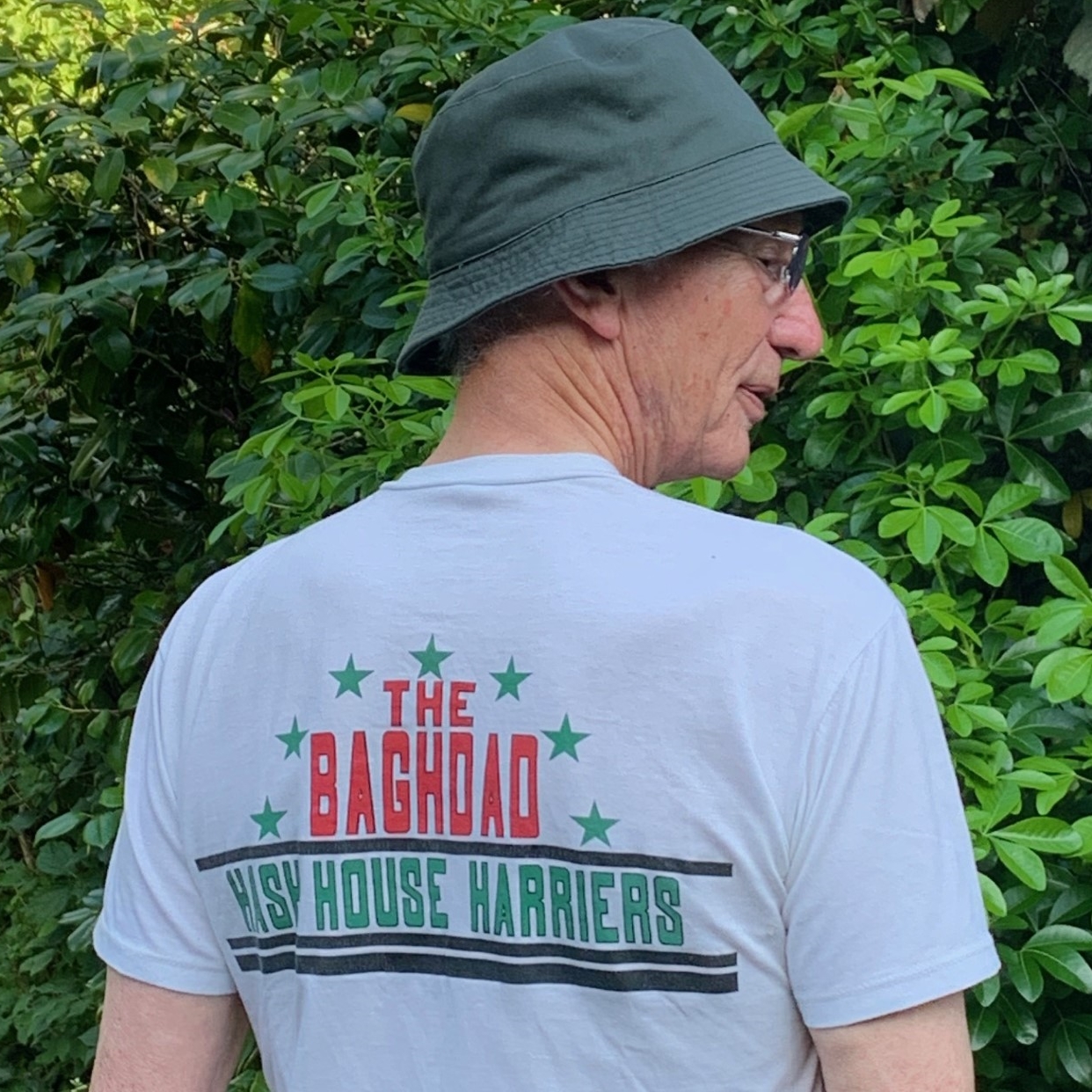
Geoffrey Payne in 2023, wearing the Hash House Harriers T shirt from 1986.
The experience of a lifetime
Collaborating with great colleagues who want to improve the living conditions of people is the essence of what makes international research and consultancy rewarding. I learned a great deal from the key professionals I was privileged to spend time with (I cannot call it work as it was too interesting). I completed my report in August 1986 and am not sure to what extent our efforts resulted in changes in policy or practice as the situation was changing rapidly. However, my colleagues and I all did our very best to prepare reports that could help retain the best of the older areas and build new housing developments that met local needs. Yasuhiko Yamada was an extremely kind as well as efficient project manager and my project leader, Jac Smit, was very experienced and committed with a great sense of humour.
My other British team member, Jim Amos https://www.planningresource.co.uk/article/414057/rtpi-news-jim-amos-outstanding-service-planning-institute) suggested that the focus of my career and my experience made me a suitable member of the Royal Town Planning Institute and as a past-President of the RTPI, he even offered to nominate me for membership. I gratefully accepted and it is largely thanks to him that I have been able to operate as a professional town planner ever since.
Finally, I immensely enjoyed collaborating with my local colleague Nadia Tobia, who helped me learn a great deal about the issues facing both the country and the city as we prepared housing policy proposals. She presented me with a copy of the Imara architectural magazine which I still have in my files. We have kept in touch since and it is thanks to her that I have prepared this contribution to the FEEFAA website.
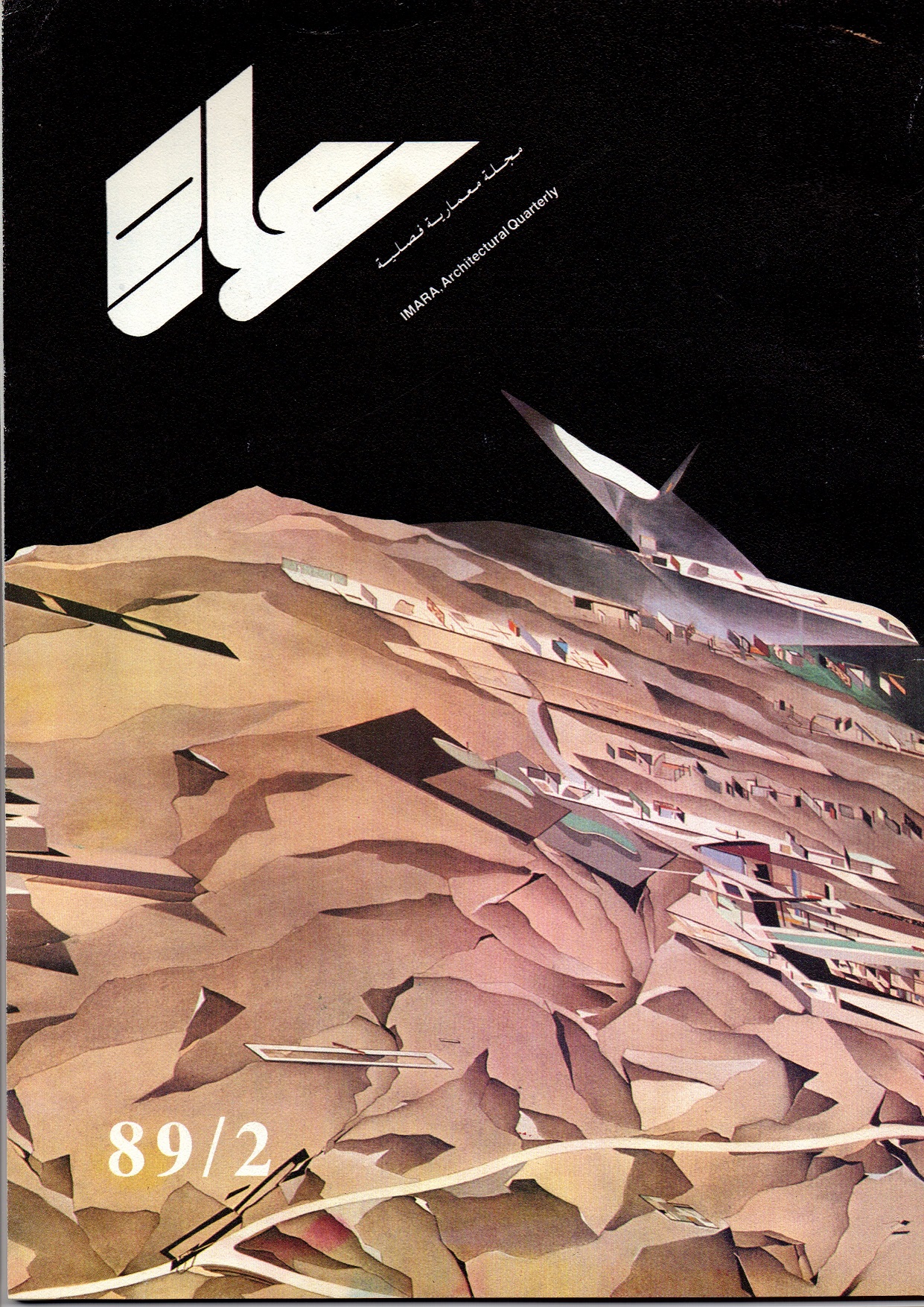
Imara Magazine.
My time in Iraq was short, but the personal effects have lasted for decades. Whenever I have flown over the area since on other assignments, I look down to offer thanks and send best wishes.
Cover Image: Residential area in Baghdad, Photo by A. Rikabi, “Iraq National Housing Policy” report 2010. Geoffrey Payne was Technical Advisor on Housing and Informal Settlements for Aecom International Development. Copyright© Ministry of Construction and Housing (MOCH), and United Nations Human Settlements Programme (UN-HABITAT), 2010.
Bibliography
- Thesiger, W (1964) ‘The Marsh Arabs’
- Warren, J. and Fethi, I. (1984) Traditional Houses in Baghdad’ Coach Publishing House, Horsham, UK.
About Geoffrey Payne
Geoffrey Payne is a housing and urban development consultant and researcher After an academic career of twenty years, during which he established and directed a research centre and an international master degree course, he established Geoffrey Payne and Associates in 1995. He has undertaken assignments in all regions of the world for a range of international development agencies, especially the World Bank and Un-Habitat. He has published widely (see www.gpa.org.uk) and his latest book ‘Somewhere to Live: Rising to the global urban land and housing challenge’ was published by Practical Action in 2022. https://practicalactionpublishing.com/book/2601/somewhere-to-live

